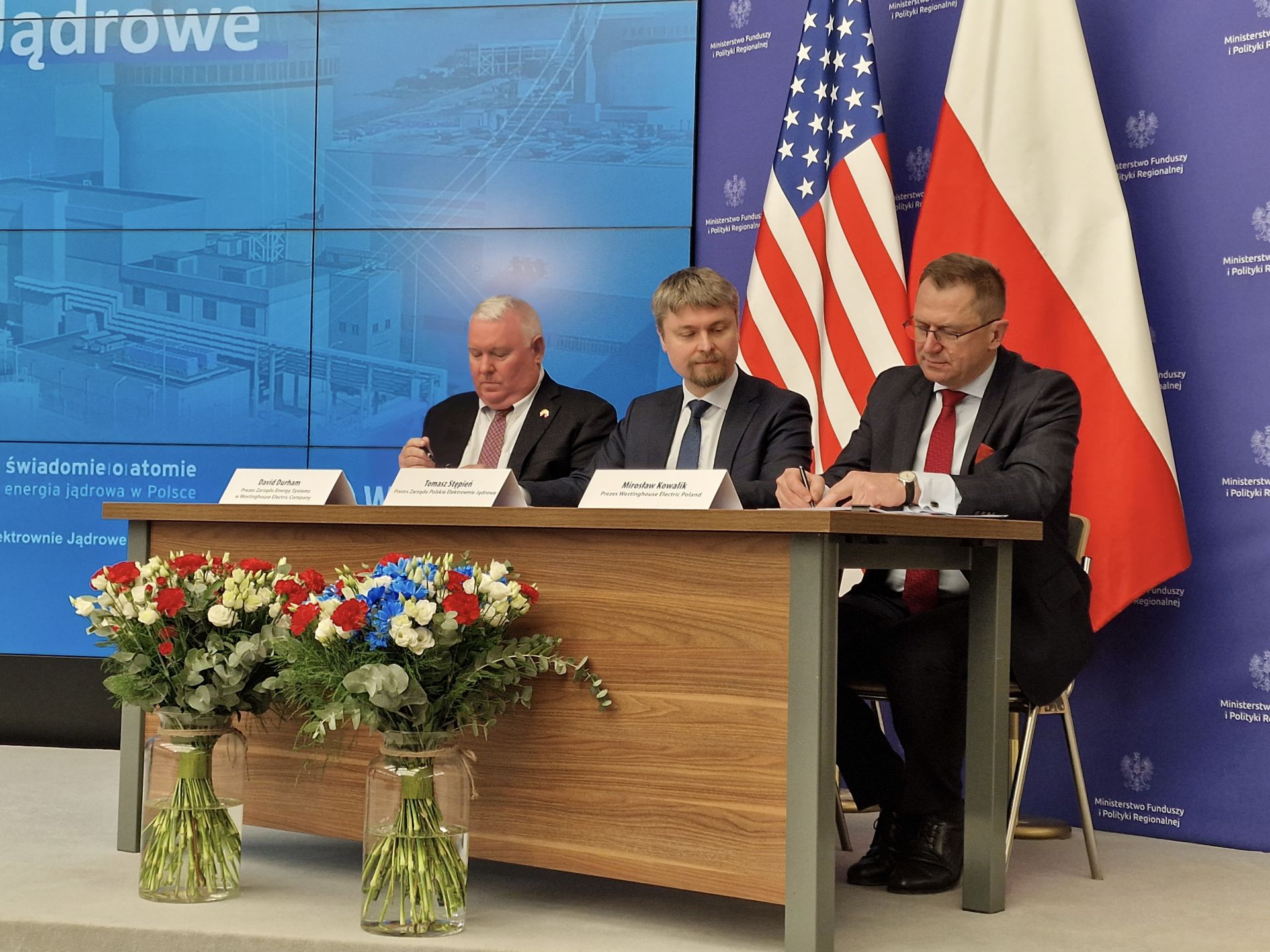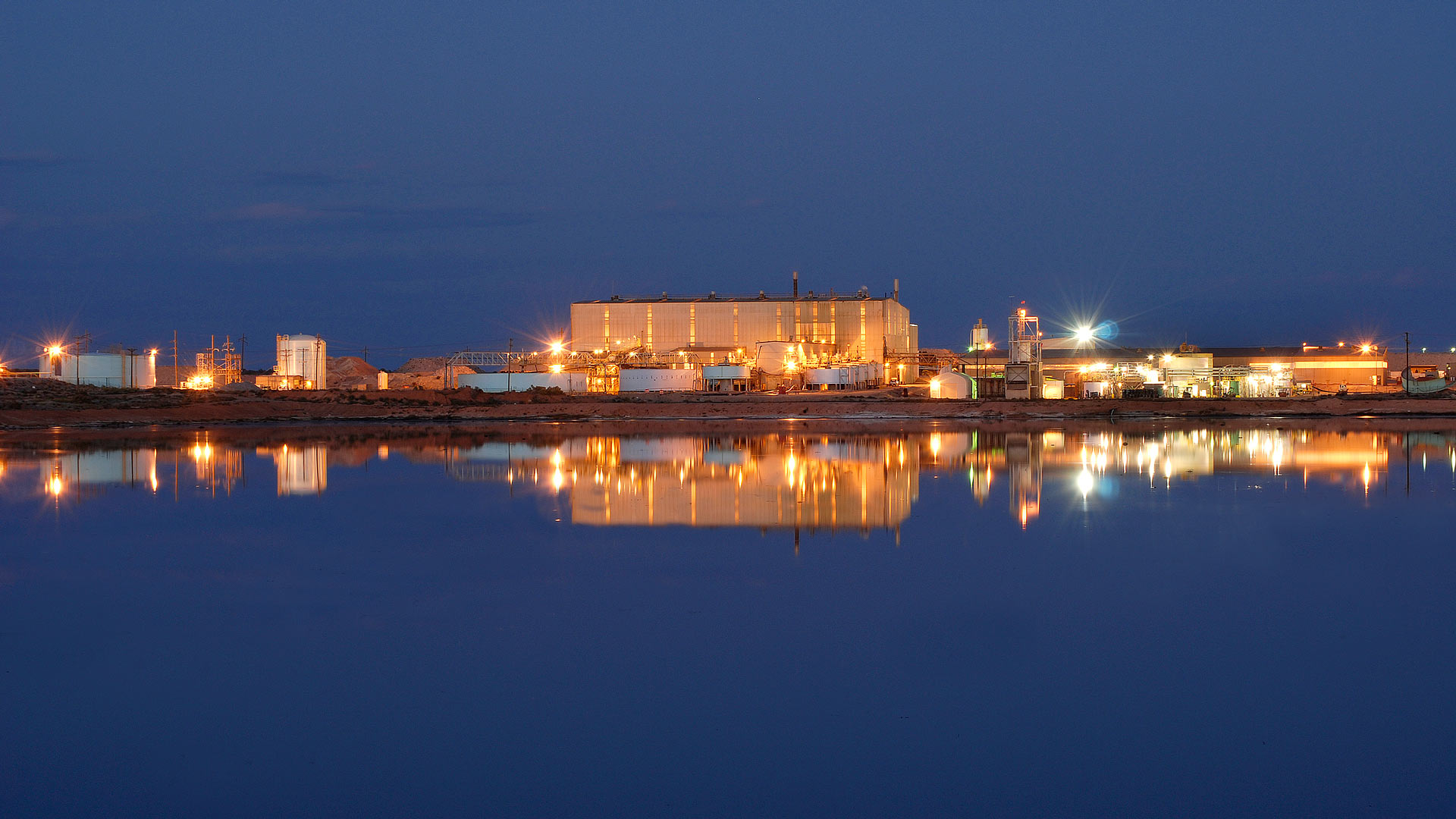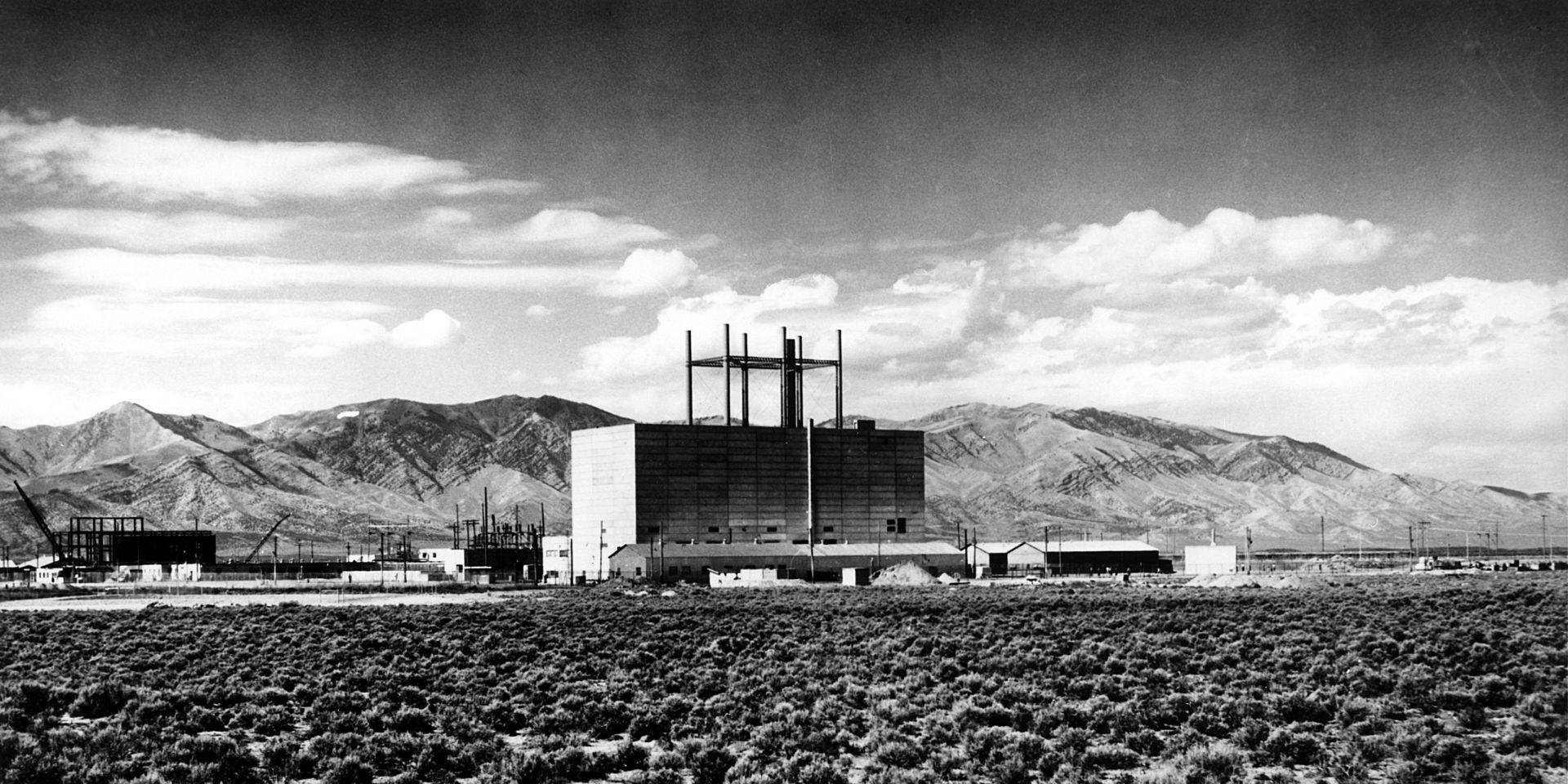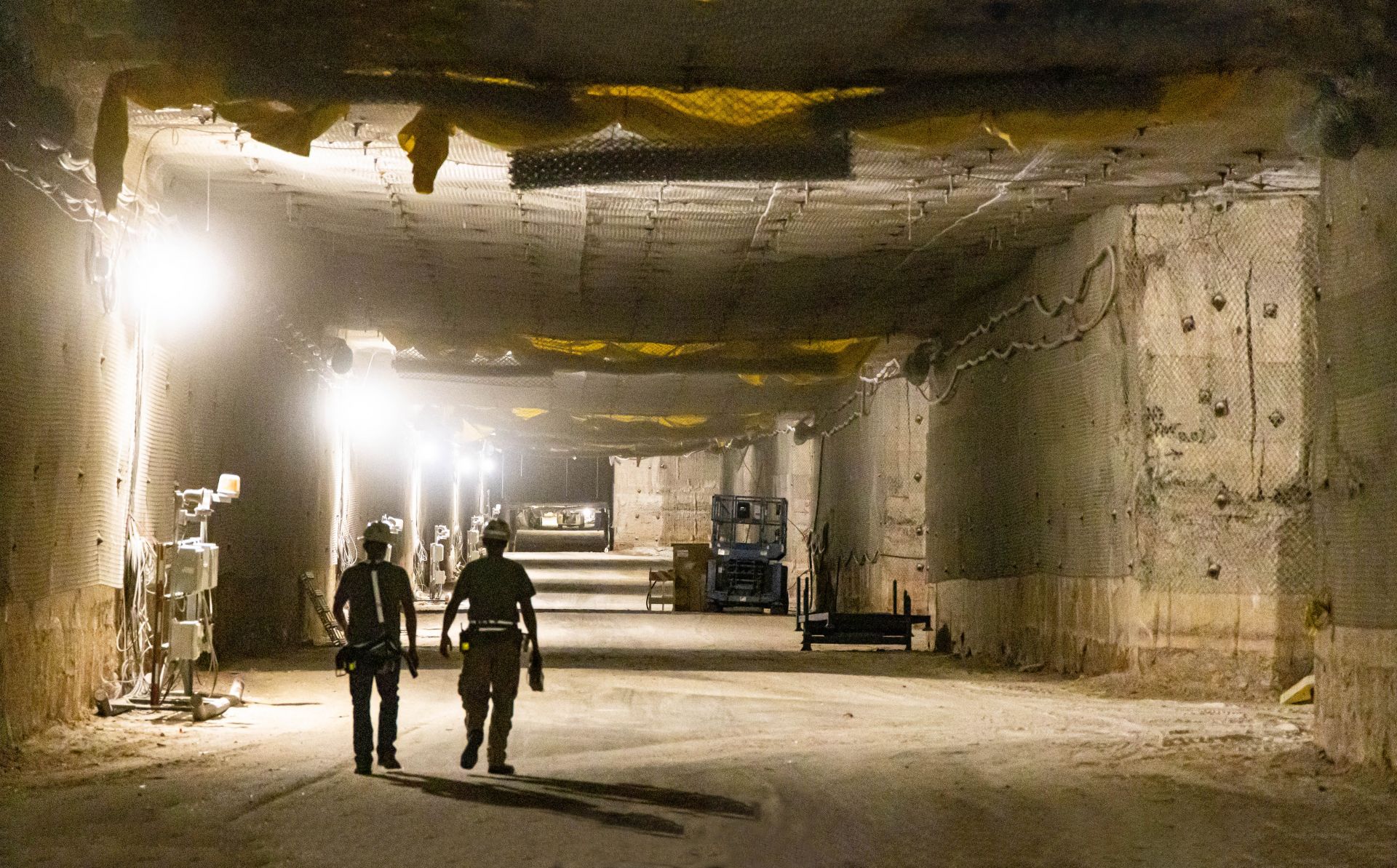Since 1957, the Advisory Committee on Reactor Safeguards has had a continuing statutory responsibility for providing independent reviews of, and advising on, the safety of proposed or existing reactor facilities and the adequacy of proposed reactor safety standards in the United States.
The 1957 amendment to the Atomic Energy Act of 1954 established the Advisory Committee On Reactor Safeguards as a statutory committee with an independent advisory role and the responsibility to “review safety studies and facility license applications” and advise the U.S. Atomic Energy Commission “with regard to the hazards of proposed or existing reactor facilities and the adequacy of reactor safety standards.” With the enactment of the Energy Reorganization Act of 1974, the ACRS was assigned to the newly established Nuclear Regulatory Commission with its statutory requirements intact.
From left, Westinghouse Energy Systems president David Durham, Polskie Elektrownie Jądrowe president Tomasz Stępień, and Westinghouse Poland president Mirosław Kowalik sign a contract on February 22 to advance Poland’s nascent nuclear energy program. (Photo: Westinghouse Electric Company)
State-owned Polish utility Polskie Electrownie Jądrowe and U.S.-based Westinghouse on February 22 moved a step closer to their end goal—the deployment of multiple AP1000 reactors in Poland—with the signing of a contract covering front-end engineering, early procurement work, and program development.
The IAEA team of of nuclear safety, security, and safeguards experts inspecting damage last year at the Zaporizhzhia nuclear power plant. (Photo: Dean Calma/IAEA)
As the war in Ukraine enters its second year, the International Atomic Energy Agency has released Nuclear Safety, Security and Safeguards in Ukraine, an overview of the conflict’s impact on the beleaguered nation’s nuclear facilities and of the agency’s actions to lessen the likelihood of a nuclear accident.
The Loviisa nuclear power plant. (Photo: Fortum)
The Finnish government on February 16 granted a new operating license to Fortum Power and Heat Oy for its two Loviisa reactors—twin 507-MWe VVER-440/V213 units—providing them with an additional 20 years of operational life.
The Braidwood (left) and Byron nuclear power plants. (Photos: Constellation Energy)
Constellation Energy has announced that it intends to invest $800 million in new equipment at the Braidwood and Byron nuclear plants in Illinois to raise their combined output by a total of about 135 MW.
A 3D view of the TN Eagle used fuel cask. (Image: Orano)
Orano Group subsidiary Orano NPS announced that Swiss electrical utility Axpo has selected the company to provide its TN Eagle used nuclear fuel casks over the entire operating period of the Leibstadt nuclear power plant in Switzerland.
The Y-12 site in Oak Ridge, Tenn. (Photo: Wikimedia Commons)
A fire broke out at the Y-12 National Security Complex in Oak Ridge, Tenn., earlier today. According to Y-12’s Facebook page, one of the site’s production buildings had a fire in a hood at approximately 9:15 a.m. Y-12 emergency services responded to the event and precautionary protective actions were initiated for employees who were in the vicinity of the incident and who were not involved in the emergency response.
A nuclear power display by the AEC was one of the exhibits at the Oregon Centennial Exposition and International Trade Fair in 1959. (Photo: Oregon Historical Society)
The Oregon Encyclopedia website has posted an article about the state’s Oregon Centennial Exposition and International Trade Fair, held in Portland in 1959 in celebration of Oregon’s becoming the 35th U.S state 100 years prior. The Oregon Encyclopedia is a project of the Oregon Historical Society.
Browns Ferry: A breaker-to-breaker run. (Photo: NRC)
The Tennessee Valley Authority took Browns Ferry-2 off line February 17 for a refueling and maintenance outage, following a nearly two-year, breaker-to-breaker run—the first in the Alabama nuclear plant’s history.
According to the utility, the unit established a new record for itself with 665 days of continuous operation, producing more than 20 billion kilowatt-hours of electricity.
CNSC’s Rumina Velshi (left) and the PAA’s Andrzej Głowacki sign a memorandum of cooperation on advanced and small modular reactors. (Photo: CNSC)
The Canadian Nuclear Safety Commission (CNSC) and Poland’s National Atomic Energy Agency (PAA) have signed a memorandum of cooperation to share best practices and experience in reviewing advanced and small modular reactor technologies. (The two agencies are already engaged in cooperation on nuclear safety matters under a memorandum of understanding inked in 2014.)
Energy Fuels’ White Mesa Mill in southeastern Utah is the only operating conventional uranium mill in the United States. (Photo: Energy Fuels)
The bipartisan Nuclear Fuel Security Act (NFSA), introduced in the Senate last week, would authorize the Department of Energy to establish a Nuclear Fuel Security Program to “ensure a disruption in Russian uranium supply would not impact the development of advanced reactors or the operation of the United States’ light water reactor fleet.” The bill was introduced by Sen. Joe Manchin (D., W.V.), chairman of the Senate Energy and Natural Resources (ENR) Committee; Sen. John Barrasso (R., Wyo.), ranking member of the Senate ENR committee; and Sen. Jim Risch (R., Idaho).
February 17, 2023, 3:03PMRadwaste SolutionsPeter Swift, Michael Apted, Lake Barrett, John Kessler, and Steven Nesbit An electric continuous miner machine cuts out a waste-emplacement panel at the Waste Isolation Pilot Plant salt repository in New Mexico. (Photo: DOE)
Used nuclear fuel and high-level radioactive wastes are by-products of nuclear energy production and other applications of nuclear technology, and the consensus approach to disposing of those wastes safely is to encapsulate them and emplace them in stable geologic formations (geologic repositories) where they will be isolated from people and the environment for very long periods of time. The federal government has established environmental standards for waste isolation that any proposed geologic repository must meet.
In July 2021, the American Nuclear Society established a special committee to consider possibilities for revised generic environmental standards for disposal of spent nuclear fuel and high-level radioactive waste in the United States. The committee developed a number of recommendations, which are contained in a draft report that was to be issued in February for review and comment by stakeholders. The draft report can be found on the ANS website, at ans.org/policy/repositorystandard/.
The committee’s draft recommendations are based on two underlying assumptions. First, that the relevant legislative framework for regulation defined in the Nuclear Waste Policy Act (NWPA) remains unchanged. Specifically, it is assumed that the Environmental Protection Agency will be charged with promulgating environmental standards for disposal and that the Nuclear Regulatory Commission will be charged with reviewing applications for disposal facilities using licensing requirements and criteria consistent with the EPA standards. Second, that existing generic disposal standards will be updated or replaced.
The National Reactor Testing Station. (Photo: DOE)
In March 1949, the Atomic Energy Commission selected a site in Idaho for the National Reactor Testing Station (NRTS), known today as Idaho National Laboratory. Idaho’s Snake River Plain was selected because of the rural nature of southern Idaho. The site would go on to be the most remarkable proving ground for today’s nuclear industry. Experiments at this world-class facility have continually paved the way for nuclear innovation.
Vogtle Unit 3, in January. (Photo: Georgia Power)
Already for the second time this year, Southern Company has announced a delay to the expected commercial operation of Unit 3 at the Vogtle nuclear plant’s two-unit construction site. In addition, a delay to Unit 4’s startup is also possible, Southern said.
Two workers walk down an underground passageway at the Waste Isolation Pilot Plant transuranic waste repository in New Mexico. (Photo: DOE)
While still lacking a deep geological repository for the permanent disposal of its commercial used nuclear fuel and high-level radioactive waste, the United States does have regulatory standards for geological nuclear waste disposal.
Having been written nearly 40 years ago, however, those standards are outmoded and lack transparency, according to a special committee of the American Nuclear Society, which has released draft recommendations on revising public health and safety standards for future geological repository projects in the United States.





_(52340771440).jpg)













 2x1.jpg)

